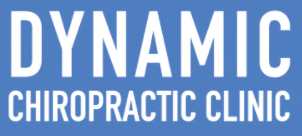![]() Our traditional understanding of fiber and its nutritional benefits has been mainly in the area of regularity. Fiber keeps us ”regular”; almost everyone, it seems, knows that. Despite this knowledge, however, there is a huge discrepancy in actual fiber intake in the United States.
Our traditional understanding of fiber and its nutritional benefits has been mainly in the area of regularity. Fiber keeps us ”regular”; almost everyone, it seems, knows that. Despite this knowledge, however, there is a huge discrepancy in actual fiber intake in the United States.
While the recommended daily intake of fiber is 25-38 grams per day, the vast majority of Americans consume far less. But that trend is changing. Research from as early as 1986 in the journal Gastroenterology highlighted the beneficial effects of colonic bacterial fermentation of complex carbohydrates such as fiber. Since then, multiple additional studies by other researchers such as the British Journal of Nutrition and the American Journal of Clinical Nutrition have provided even more insights into this critical process.
Food manufacturers have obviously responded to consumers’ demand for fiber and digestive-health products, and there are now more products with fiber or digestive-health claims in the marketplace. In fact, according to the Global New Products Database, the number of new products in 2006 with a fiber descriptor on the label surpassed the number of new products with more traditional and established claims like “added calcium” or “reduced fat.” Even more astounding, the number of new products with digestive-health claims introduced into the marketplace was second only to products with a vitamin fortification claim. In 2007, the term prebiotics was used on at least 54 food and beverage products, a remarkable increase from approximately 23 a year earlier. Next year, expect that the term “probiotics” will see a dramatic increase. What do these terms mean? Well, it’s important to note that almost every term in nutrition has a specific meaning. Prebiotics are things that bacteria eat. Probiotics are actual bacteria that people ingest. Dr. Carr’s prediction: Probiotics will really come into their own in yogurt, where there bacteria are normally left anyway, so why not promote it, right?
One of the best sources of probiotics is available from your Seattle chiropractic office. We get ours from right in Redmond, Washington: Pharmax.
Okay, back to fiber. “Normally”, fiber was advertised in bakery and cereal products. While these products still are abundant, the discovery of new sources of soluble fibers in particular has enabled food and beverage manufacturers to add fiber to nontraditional products, such as beverages and dairy products. There are now prebiotic fibers in beverages, yogurt and bars. Dietary supplements containing prebiotic fibers also are very common.
Surveys show American consumers are actively looking for products that contain fiber. Over the past five years, the number of consumers increasing their use of fiber has risen steadily. A Health Focus Trend Report showed that in 2006, more than 42 percent of consumers reported they were actively increasing their fiber intake, while 9 percent reported increasing their use of carbohydrates that promote digestive health. Ask your doctor for more information about the right foods to eat to promote digestive health.
